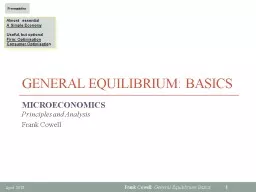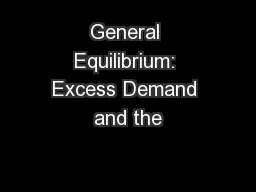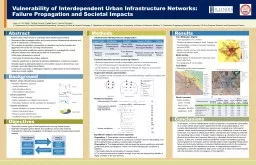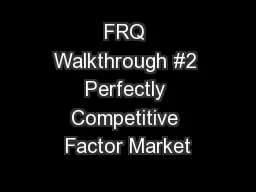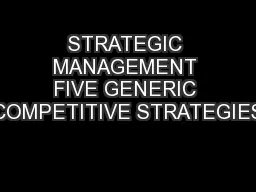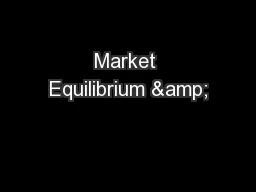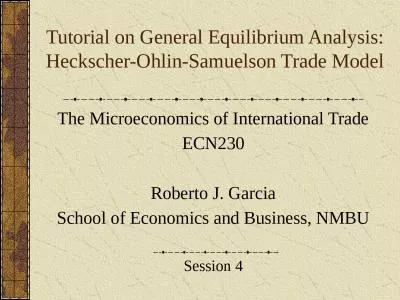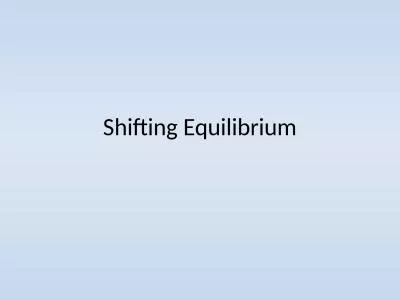PPT-Market Power, Market Failure, and General Competitive Equilibrium
Author : harper | Published Date : 2023-11-03
Chapter 9 The Nice Assumptions No Market Power Individuals have Equal access to information Equal access to the market No market failure Markets Form quickly when
Presentation Embed Code
Download Presentation
Download Presentation The PPT/PDF document "Market Power, Market Failure, and Genera..." is the property of its rightful owner. Permission is granted to download and print the materials on this website for personal, non-commercial use only, and to display it on your personal computer provided you do not modify the materials and that you retain all copyright notices contained in the materials. By downloading content from our website, you accept the terms of this agreement.
Market Power, Market Failure, and General Competitive Equilibrium: Transcript
Download Rules Of Document
"Market Power, Market Failure, and General Competitive Equilibrium"The content belongs to its owner. You may download and print it for personal use, without modification, and keep all copyright notices. By downloading, you agree to these terms.
Related Documents


